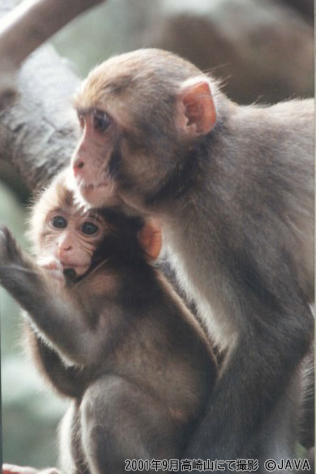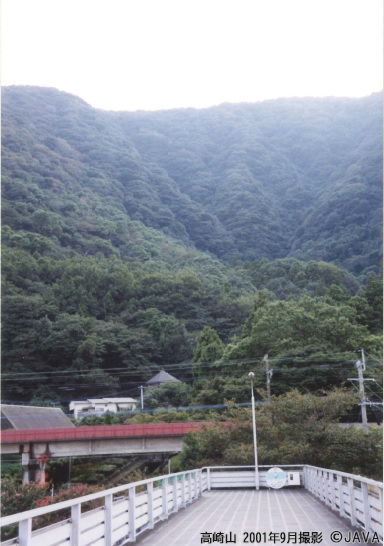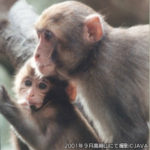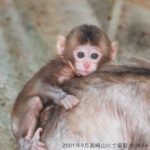Don’t send Japanese macaques to the zoo in Uruguay!
Please speak out against the Oita City’s plan to donate them
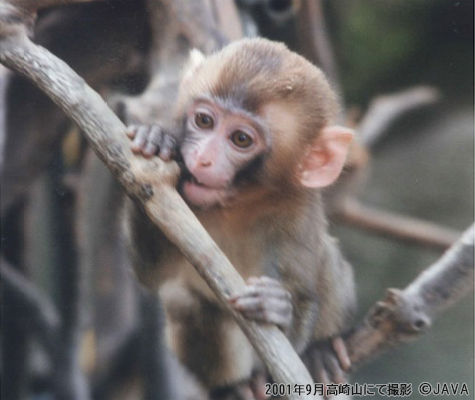
Oita City, Oita Prefecture is proceeding with a plan that they capture wild Japanese macaques (hereafter referred to as “monkeys”) in Mt.Takasaki(※) and donate them to the “Bioparque Washington Rodriguez Piquinela” in Durazno Department, Uruguay.
At the 2019 Rugby World Cup Japan Tournament, the Uruguay team set up a camp in Oita City, and the exchange between the two began. Oita City gives a damned explanation about the reason for donating monkeys, saying, “We would like monkeys to be responsible for bridging the two countries and raising the name of the city.”
Since this plan is fraught with many problems as follows, including the viewpoint of animal welfare, on May 23, 2022, JAVA has sent a document requesting the mayor of Oita City to completely withdraw the donation plan. We have also sent a document to the Governor of Oita Prefecture, who has the authority to issue a permit to capture wild animals, asking Oita City not to issue the permit.
Then, on June 29, we requested the Governor of Durazno Department not to accept the donation of monkeys.
※There is Takasakiyama Natural Zoological garden(opened in 1953)run by Oita City in Mt.Takasaki. Here, they feed wild monkeys for the purpose of attracting tourists.
Since the zoo and its surroundings are areas where caputure is prohibited, monkeys in other areas will be captured for the donation.
― CONTENTS ―
- ● Problems of the donation plan
- ● Japanese macaques are not a rare species and are killed in Oita City
- ● Until 2001, Oita City have provided monkeys from Mt.Takasaki for animal experiments
- ● Take action!! Please send your opinion to the mayor of Oita City and the Governor of Durazno Department
Problems of the donation plan
The monkeys will be placed in a situation that is contrary to their ecology
Japanese macaques live in groups of about 10 to 100 monkeys, centered around females and children, and lead complex and highly social lives. It is well known that they are very intelligent animals with excellent memory and cognitive abilities.
This donation plan will separate some of the monkeys from their troops in order to send the number of animals that can be bred at the zoo. And also, Japanese macaques are animals that do not have a fixed roost and live on the move. Their range of activity extends from several to several dozen square kilometers, and sometimes even up to 100 square kilometers in some cases. Keeping them in a zoo will cause them great emotional distress and is a form of psychological abuse.
Capture and detention for infectious disease testing is harsh
The method currently being considered for capturing monkeys and testing them for infectious diseases is to capture them in cages that are 10 meters squared, transfer them one by one to individual cages for testing, and keep them in individual cages for six weeks until the tests are completed. The monkeys that were living freely in the mountains are suddenly trapped, separated from their friends, and confined in cramped cages for long periods of time in fear, not knowing what they will be subjected to or whether they will be killed.
Transportation is also quite harsh on the monkeys
When animals are transported by air, they are usually placed together with the cargo in the cargo hold. The animals are confined to a small cage in an environment with loud engine noises, in pitch darkness, high temperatures in summer and below zero temperatures in winter, along with the fear of not knowing where they are going to end up. It takes about 30 hours to Uruguay by air (about 1 month by sea) (It does not include transportation time within Japan and Uruguay), which the monkeys will have to suffer through.
There are the following standards regarding the transportation of animals.
- “Transport of live specimens” Resolution Conf. 10.21 (Rev. CoP16) of Convention on International Trade in Endangered Species of Wild Fauna and Flora (CITES)
- “Animal health measures applicable during transit from the place of departure in the exporting country to the place of arrival in the importing country” CHAPTER 5.5. of the Terrestrial Animal Health Code of the World Organisation for Animal Health (OIE), which Japan is a member of
- “IATA Live Animals Regulations (LAR) “for the transport of live animals by commercial airlines by International Air Transport Association (IATA)
These situations indicate that transportation of animals places a great burden on the animals’ physical and mental health and is an extremely worrisome practice in terms of animal welfare.
It’s a waste of a lot of tax
Oita City has already secured a budget of 7 million yen (about 52,000 dollars) for preparation costs such as purchasing cages for breeding. It is said that transportation costs will be secured as a budget for the next fiscal year. However, due to the influence of COVID-19 crisis, Oita City’s finances are in a difficult situation, so this is a huge waste of taxes.
Japanese macaques are not a rare species and are killed in Oita City
To begin with, the Japanese macaque is not a creature that lives only in Oita City, but in almost all areas of Japan. They are not a rare species, but rather are treated as a nuisance in Japan because of the damage they cause to crops, and over 23,000 of them are exterminated every year. The number of exterminations in Oita Prefecture, where Oita City is located, has reached 348. (2020).
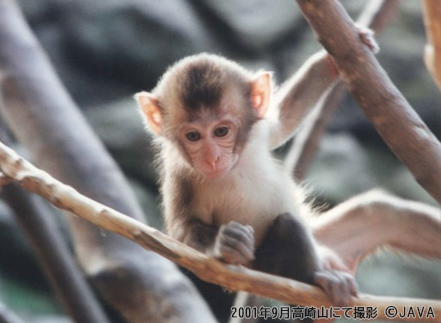
Until 2001, Oita City have provided monkeys from Mt.Takasaki for animal experiments
Furthermore, from around 1980 to 2001, Oita City has been capturing monkeys from Mt. Takasaki and giving them to Oita Medical University (currently Oita University) for animal experiments. At that time, JAVA filed criminal accusations for the illegal capture of Oita City and conducted a signing campaign. After much criticism, the city discontinued the experimental transfer. Humans should never again use monkeys for human’s selfish purposes.
We wonder what purpose Oita City wants to achieve by raising the name recognition of the city in Uruguay. If they want to raise the name recognition of the city and deepen their friendship, they should appeal the things, culture, nature, etc. that are unique to Oita City, and have opportunities for citizens to interact with each other.
According to media reports, Oita City has donated monkeys from Mt. Takasaki to a zoo in Rome, Italy in 1977. They should not repeat what was done 45 years ago.
Take action!!
Oita City has responded to JAVA that it intends to apply for capture to Oita Prefecture around September of this year. We appreciate your cooperation in withdrawing the plan by then.
To the mayor of Oita City
Please send your opinion to the mayor of Oita City, “Don’t send the monkeys from Mt. Takasaki to Uruguay!” and “I request to withdraw the monkeys donation plan to Uruguay.”
Mayor of Oita City, Mr.Kiichiro Sato
2-31 Niagemachi, Oita City, Oita Pref. 870-8504 Japan
Public Relations Division Email Address : kochokoho@city.oita.oita.jp
To the Governor of Durazno Department
Please send your opinion, “Don’t receive the monkeys from Oita City”
Intendente de Durazno
Lic. Prof. Carmelo Vidalín Aguirre
E-MAIL: intendente@durazno.gub.uy
